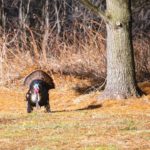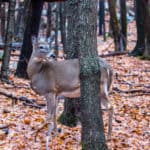Black bears, also called American Black Bears, are the most common bear species in North America. They are found all throughout North America, from Canada, the United States, and as far south as Mexico. Within the U.S., black bears are found in 41 of the 50 U.S. states and territories.
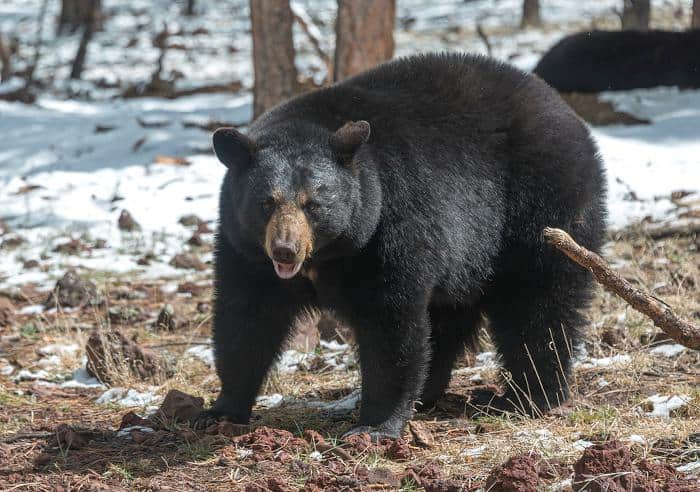
Female black bears weigh between 100 and 400 lbs., while males of the species tend to be 30-35% larger. An adult male black bear can weigh anywhere from 250 to 650 lbs. There have been confirmed cases of exceptionally large male black bears weighing as much as 800 lbs. Currently, the largest black bear on record came from New Brunswick, Canada, and weighed nearly 1100 lbs.
Black Bear Colors
As the black bear name implies, most black bears are black in color, but they can also be other colors, including dark brown, cinnamon, and reddish black. The color variations are believed to be related to the geography, diet of the bears, and the time of year. Most bears located east of the Mississippi River tend to be black, while the majority of the color variations are west of the Mississippi and north of Maryland.
The colors of black bears can vary depending on the season as their colors can change with the changing of their coat. For example, a black bear’s fur might be light brown in the summer, but it will turn darker as the weather gets colder. This is because their fur helps to camouflage them in their surroundings and allows them to blend in with their natural environment.
The fur of a black bear is heavy and thick, which helps to keep them warm in cold weather. Black bears also have a layer of fat under their skin that acts as insulation, and this can help them to survive in cold climates. However, their fur is not waterproof, so they can get wet if it rains or they swim.
Typical Habitats
Highly adaptable, black bears are found in several different habitats and ranges, including mountains, swamps, agricultural areas, and tideland areas, just to name a few. Black bears tend to be highly secretive, shy, and rarely seen in the wild. They prefer dense cover for bedding and are more active at night and early morning.
Like most members of the bear family, black bears possess a highly acute sense of smell. Even more acute and sensitive than that of a bloodhound. Their sense of smell is one reason they are rarely seen in the wild, as they typically smell danger well before it gets near them.

Due to their size, Black bears have little or no natural predators. A large pack of wolves or a large mountain lion might be able to overtake a sick or elderly black bear, but, for the most part, they maintain the top position in the food chain.
The only time Black bears are not the top predator occurs when they share their range with the larger Brown Bear. However, as brown bears tend to be much larger (Grizzly bears are a subspecies of the brown bear), they become the dominant predator in shared space. In fact, there have been recorded cases of Grizzly bears attacking and consuming the smaller Black bear.
Common Black Bear Diet
Black bears are omnivores meaning that they feed on both animal and plant material. Their diet varies greatly depending on the season and location. Insects, berries, nuts, and plants make up nearly 80% of the average Black bear’s diet.
They feed on more insects such as ants, caterpillars, and bees in the summertime. They also feed on various berries, including blueberries, raspberries, and blackberries.
In the fall, Black bears increase their volume of food intake to prepare for hibernation. Their fall diet includes eating nuts such as hazelnuts, chestnuts, and acorns. When they aren’t hibernating, they mainly eat buds and twigs from trees and shrubs during the winter.
Black bears are also carnivores that eat meat when they can get it. They will eat small mammals such as mice, rats, and rabbits. They will also scavenge for dead animals to eat. Black bears have even been known to kill deer on occasion.
Reproduction
For the most part, Black bears are solitary animals that only come together during the mating season. However, mothers and cubs may remain together for a year or more after the cubs are born.

Generally, Black bears breed in late May or early June. The female will have a delayed implantation of her fertilized egg, so the embryo will not start developing until November. This delayed birth process is designed so the cubs will be born when food is abundant during the spring.
After a gestation period of about 220 days, the female bear will give birth to 1-4 cubs. Cubs are born blind and helpless and weigh about 8 ounces. They nurse for around four months but stay with their mother for up to 2 years.
Are Black Bears Dangerous?
While black bears are less aggressive than their larger brown bear cousins, they can and do occasionally attack humans. According to bear attack data maintained by San Jose State University, brown bears attack and kill far more people per year than black bears. However, the cases where black bears attack and kill people seem to be acts of predation versus territorial or cub protection attacks.
Data surrounding black bear fatalities collected from the last ten years indicates that the victims of those attacks were either consumed or partially consumed in all but a few cases.
While a female Black bear with cubs will vigorously defend her cubs, Black bears are more likely to flee or climb a tree to escape versus attacking. This fleeing behavior is much different from the more aggressive female Grizzly bear with cubs.
Hunting Black Bears
Typically, Black bears are hunted in the following methods:
Hunted with Dogs
Where legal, this bear hunting tactic involves using a group of dogs (usually a species of hounds) to locate and tree the bear. The dogs hunt based on scent and then trail a Black bear until it climbs a tree or becomes cornered.
Black bears can be hunted with dogs in a few different ways. Some hunters prefer to use packs of hounds to track and tree the bear, while others will use a single hunting dog to chase the bear until it is treed. In either case, when the bear is located, the hunter will approach on foot and dispatch the animal.
The most popular weapon for this kind of hunting is a centerfire rifle or shotgun loaded with slugs.
Hunting Black bears with dogs is dangerous for the dogs if the bear stops fleeing and decides to stand its ground. Its not uncommon for a large bear to seriously injure or potentially kill dogs when cornered with nowhere else to go.
This style of Black bear hunting is more popular in the in the eastern portion of the United States.
Bait Hunting
Another popular method to hunt black bears is by using bait or over a baited stand. Where legal, this approach involves placing food in an area where Black bears are located. Depending on location being hunted and the baiting laws in that particular state, bear bait is deployed in two different methods:
- No Container Bait
- In a Container Bait
No Container
In states that have strict laws against placing the bait in a container, the bear bait is placed directly on the ground or hung up in a tree a few feet off the ground.
In a Container
In states that allow a container for bear bait, the bait is placed inside a container of some sort that is designed to force the bear to work to access the bait. This approach makes the bait last longer, and keeps the Black bear at the bait for longer periods of time.
The most popular bait containers are heavy duty metal barrels with a hole but in own end so bait comes out as the bear rolls the barrel around.
A hunter (usually in a tree stand) then hunts over the bait, waiting for the bear or bears to return.
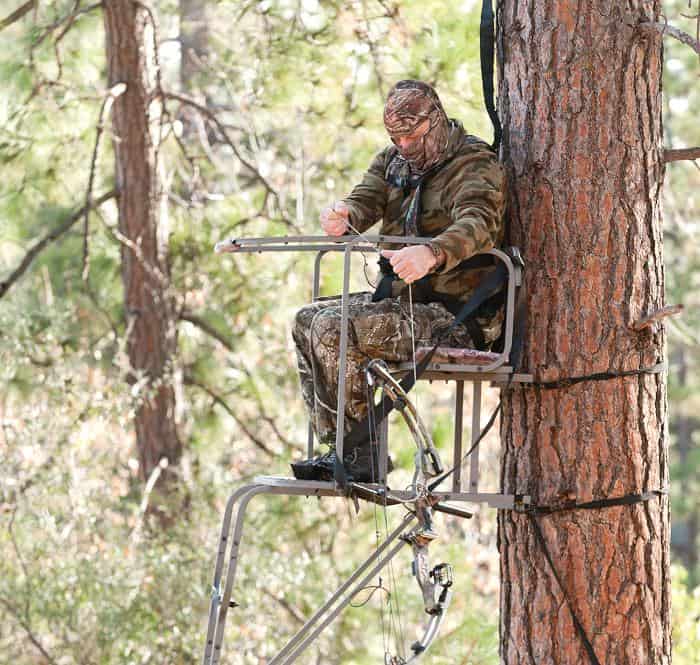
Some popular bear bait includes:
- Suet cake
- Sweets (especially ones heavy in sugar) – But only for use in a container
- Meat scraps
- Trail mix
- Granola
- Oats
- Used Grease or Lard
- Beaver carcasses
With bait hunting, the most popular weapons are rifles or archery.
Spot and Stalk
Very much like the name describes, the spot and stalk hunting method focuses on using binoculars or a spotting scope to glass areas until a bear is spotted. Then the hunter attempts to stalk into shooting range for a shot with a rifle or bow.
The spot and stalk method is most effective in open areas that offer a long range vantage point. This method requires quality optics that offer the best images at long ranges.
The most popular methods to harvest Black Bears are with a centerfire rifle or via archery (using a bow or crossbow). However, as bowhunting has continued to rise in popularity, more and more hunters are choosing to hunt this species of bear with archery equipment versus firearms due to the challenge that bowhunting offers.
As mentioned before, black bears have a fantastic sense of smell, so plan accordingly. While not as hearty as the brown bear, black bears are still a very large game animal with plenty of fat and tough hide that can slow down a bullet. Make sure you choose a caliber or bow capable of bringing the animal down with a single shot.
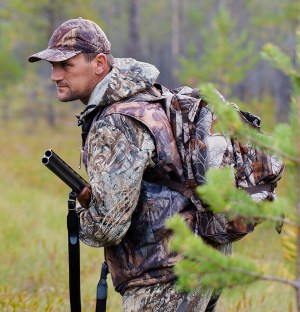
Born and raised in the North Carolina foothills, Andy was introduced to the outdoors at a very young age. Like most beginning hunters, he started out hunting small game like rabbits and squirrels, then graduated to larger species like Whitetail Deer. Although he’s an avid deer and turkey hunter, he still enjoys hunting small game as well. Andy has worked in the hunting and fishing industry for nearly 25 years.

